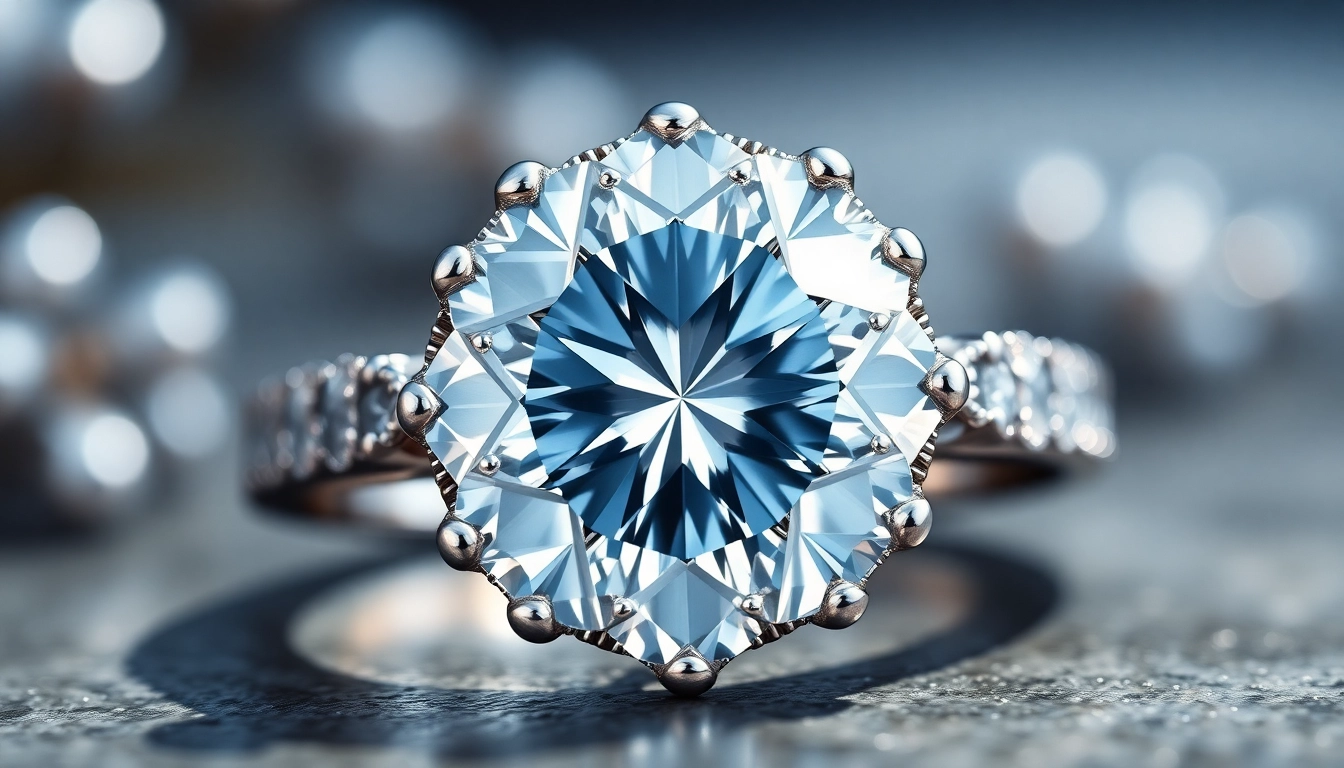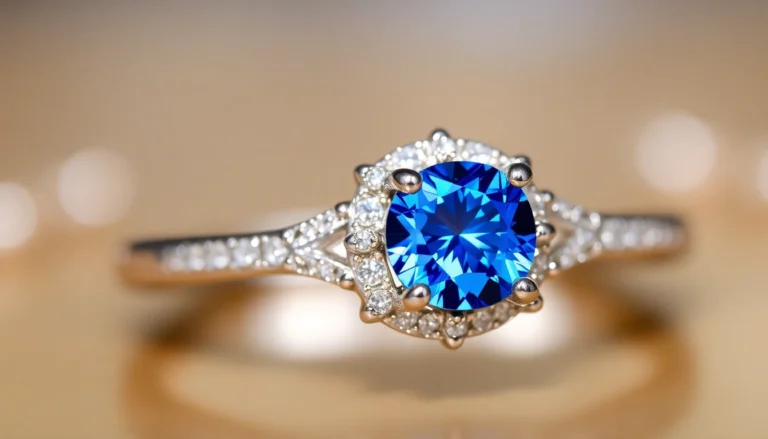The Art of Choosing Timeless Diamond Engagement Rings That Last a Lifetime
Embarking on the journey to find the perfect engagement ring is a momentous occasion that combines emotion, personal style, and expert craftsmanship. Among the myriad options available, diamond engagement rings stand out as the quintessential symbol of eternal love and commitment. With a rich history dating back centuries, diamond engagement rings have become a universal emblem of romance, blending cultural significance with exquisite craftsmanship. In this comprehensive guide, we delve into the core elements of selecting a ring that not only captures the heart but also stands the test of time.
Understanding the Significance of Diamond Engagement Rings
Historical and Cultural Importance of Diamond Engagement Rings
Historically, diamonds have symbolized strength and invincibility—qualities that resonate deeply with the promise of marriage. Originating from ancient Indian and African traditions, these precious stones gained prominence in Western societies during the 15th century, particularly after Archduke Maximilian of Austria popularized the solitaire diamond in 1477. Over centuries, cultural narratives have cemented the diamond as the ideal expression of love’s durability, exemplified by royal and celebrity associations.
In modern times, engagement rings with diamonds serve not only as a token of affection but also as a lasting legacy, embodying fidelity, strength, and enduring beauty. Different cultures interpret the diamond’s symbolism uniquely—while Western customs often place the ring on the fourth finger of the left hand, other regions, such as parts of Europe and Latin America, may prefer the right hand. Regardless of cultural variations, the universal theme remains: diamonds symbolize indestructible love.
Key Symbols and Meanings Behind Diamond Selection
Choosing a diamond involves more than aesthetics; it reflects values and personal meaning. For instance, a larger stone signifies strength and confidence, while specific cuts and colors can symbolize purity and passion. Many associate the traditional round brilliant cut with eternity and completeness, as it maximizes brilliance and fire—traits linked to the transparency and honesty of love.
Furthermore, the purity of the diamond—measured by clarity—relates to sincerity, while the color grade signifies sophistication and rarity. A well-chosen diamond encodes personal stories and aspirations, transforming the ring into a profound symbol that lasts a lifetime.
Why Diamonds Remain the Top Choice for Engagement Rings
Despite diversifying preferences towards colored gemstones or alternative materials, diamonds continue to dominate the engagement ring market. This persistent popularity stems from their unmatched durability, with a hardness of 10 on the Mohs scale, making them ideal for daily wear. Moreover, advancements in cutting techniques have refined their aesthetic appeal, allowing for various styles tailored to individual tastes.
Market confidence is reinforced by certification standards, establishing transparency and trust in quality. These factors combined sustain diamonds’ position as the premier choice—an investment in beauty and longevity.
Choosing the Perfect Diamond for Your Engagement Ring
The 4Cs: Cut, Clarity, Color, and Carat Explored
Purchasing a diamond involves understanding the ‘Four Cs’ — Cut, Clarity, Color, and Carat weight — which collectively determine its quality and value.
- Cut: Refers to how well the diamond has been shaped and faceted. A superior cut enhances brilliance and fire, making the stone appear more radiant. Ideal cuts such as the round brilliant optimize light return, while other shapes like princess or oval offer unique aesthetics.
- Clarity: Measures the presence of internal inclusions and external blemishes. Higher clarity grades like FL (Flawless) are rarer and more valuable but may not be necessary for all budgets, especially when eye-clean to the naked eye.
- Color: Describes the absence of color, with D being completely colorless, descending through the alphabet to Z, which indicates light yellow or brown tint. For engagement rings, near-colorless stones (G-H) often provide a perfect balance of quality and affordability.
- Carat: The weight of the diamond, affecting size and price. Larger stones are rarer and more expensive, but proportionate quality matters; a well-cut smaller diamond can appear more stunning than a larger, poorly cut stone.
How to Assess Certified Diamonds and Ensure Quality
Investing in certified diamonds ensures transparency and trustworthy grading. Reputable laboratories such as GIA (Gemological Institute of America) or AGS (American Gem Society) provide detailed reports on each stone’s specifications. When evaluating a certificate, verify the consistency of the carat weight and the grading of the other Cs, and ensure the report is recent and genuine.
Additionally, examining the diamond under magnification, assessing its optical performance, and confirming the absence of visible inclusions can guarantee your choice aligns with your expectations.
Matching the Diamond with Personal Style and Budget
Balancing quality and affordability is essential. For a classic and timeless look, a round brilliant cut with high color and clarity grades is advisable, albeit at a higher price point. Alternatively, modern or vintage styles may incorporate unique shapes like cushion, radiant, or emerald, which can be more cost-effective and equally stunning.
Establishing a budget early guides the selection process—focusing on priority Cs, such as eye-clean clarity or a specific size—ensures a meaningful purchase without overspending. Customization and experimenting with different shapes can result in a distinctive yet affordable engagement ring.
Designs and Settings That Enhance Your Diamond Engagement Ring
Popular Engagement Ring Settings: Halo, Solitaire, Pave, and More
The setting of an engagement ring profoundly influences its overall appearance and symbolic meaning:
- Solitaire: Features a single diamond, emphasizing simplicity, elegance, and allowing maximum light exposure for brilliance.
- Halo: Surrounds the center stone with smaller pavé diamonds, creating a larger appearance and added sparkle.
- Pave: Multiple small diamonds set closely together along the band, enhancing shine and giving a luxurious feel.
- Vintage and Custom Settings: Incorporate intricate designs or personal motifs, reflecting unique personalities and story elements.
Choosing the right setting depends on her style, daily activity level, and desired symbolism — whether classic sophistication or modern elegance.
Unique Design Trends and Customization Options
In recent years, customization has surged in popularity, allowing for personalized details such as engraved rings, mixed metals, asymmetric designs, or incorporating birthstones and meaningful motifs. 3D modeling technology enables visualization of bespoke designs, minimizing surprises upon delivery and ensuring satisfaction.
Tips for Selecting Durable and Elegant Band Metals
Band metals influence not only aesthetics but also durability:
- Platinum: Naturally hypoallergenic, extremely durable, and maintains its beauty over time—ideal for daily wear.
- Gold (14k or 18k): Classic choice with options in yellow, white, or rose, with higher karats offering richer color but slightly less durability.
- Palladium or Titanium: Modern alternatives, lightweight, and resilient, appealing to contemporary tastes.
Matching the metal with lifestyle and maintenance capabilities ensures timeless elegance.
Maintaining and Protecting Your Wedding Day Investment
Best Practices for Cleaning and Care of Diamond Rings
Proper maintenance preserves brilliance:
- Regular gentle cleaning at home using a soft toothbrush and mild soap or specialized jewelry cleaners.
- Avoid harsh chemicals or ultrasonic cleaners if the ring has fragile settings or softer gemstones.
- Periodic professional inspections to check prong stability and stone security.
Insurance and Appraisal Tips for Longevity
Insuring your ring safeguards your investment. Appraisals should be current and detailed, covering the diamond’s certification number, cut, clarity, and carat weight. Keep all documentation safe and confirm coverage limits are appropriate to the ring’s value.
When to Seek Professional Repairs and Checkups
Signs such as loose stones, bent bands, or surface scratches warrant professional assessment. Prompt repairs prevent loss and prolong the ring’s beauty and structural integrity.
Making an Informed Purchase at a Reputable Jeweler
Questions to Ask Your Jewelry Expert Before Buying
Ensure transparency by asking about:
- Total price and breakdown (center stone, setting, metal)
- Origin and certification details of the diamond(s)
- Return and warranty policies
- Available customization options
Understanding Price Comparisons and Value for Money
Comparing prices requires evaluating ring quality, certification, and craftsmanship. Be wary of significantly cheaper options lacking certification, as they may imply lower quality or synthetic stones. Conversely, establish a baseline for quality to identify fair market prices.
Benefits of Buying From Established and Trusted Jewelers
Reputable jewelers offer guarantees, authentic certification, after-sales services, and trusted craftsmanship. They often have extensive experience, positive customer reviews, and transparent sourcing, making your investment secure and fulfilling.






